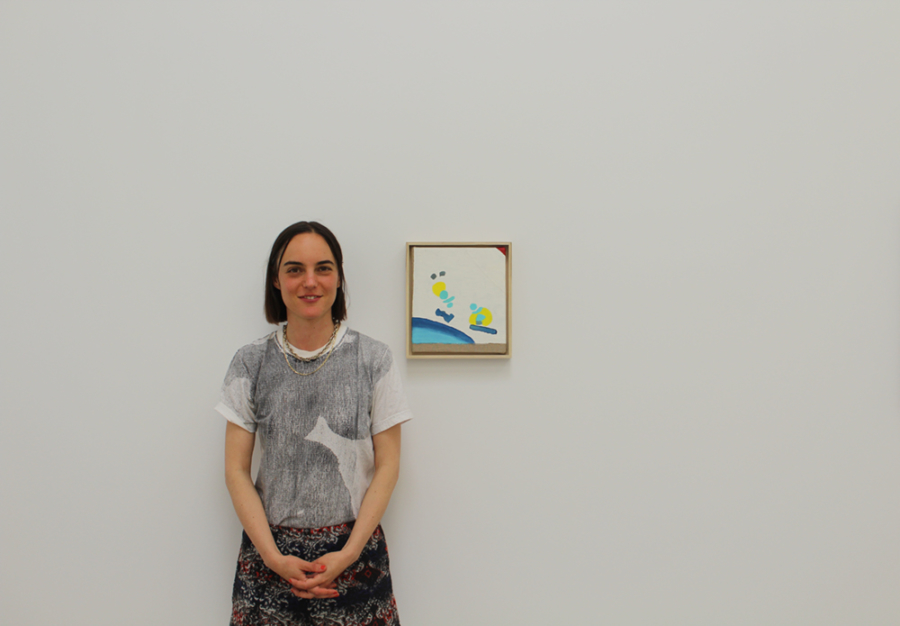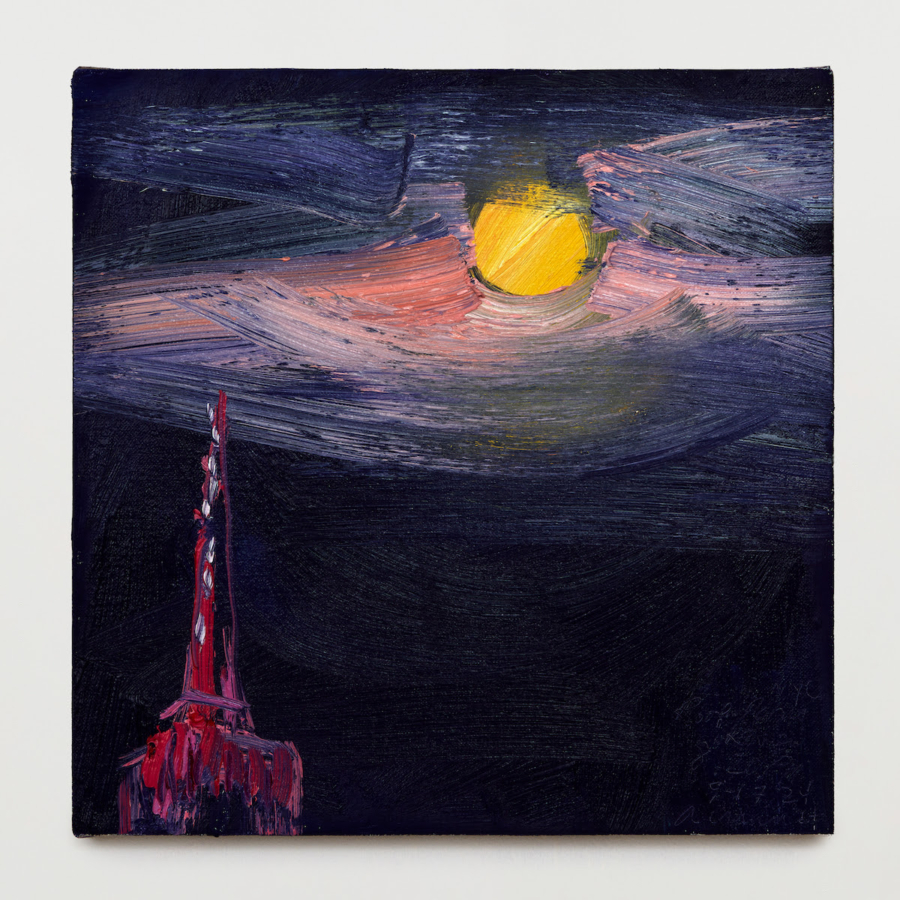June 19, 2019
Download as PDF
View on Art in America

Portrait of Marley Freeman in front of Ha Ir Re, 2019, oil on linen, 10 1⁄2 by 9 1⁄2 inches; at Karma, New York. Photo Francesca Aton.
Marley Freeman primes her canvases with homemade gesso before adding opaque and transparent layers of oil and homemade acrylic paints. In her latest exhibition, “Park Closes at Midnight” at Karma in New York, Freeman focuses primarily on the temporal process of painting. The show, which closes this Sunday, also features a set of small ceramic cubes (Blocks, 2015–19) coated unevenly in multicolored glazes that were made over multiple years with a group of artist friends. Below Freeman talks about following the properties of paint and taking inspiration from the textures of weaving.
The East River Park is closing. I live in the East Village and walk through the park frequently because of where my studio is located. The title of my exhibition, “Park Closes at Midnight,” comes from signs that seem to be posted everywhere I walk. I wanted the show to feel like a park, with themes such as greenery in nature, public space, and community. I’ve been titling my paintings from movies and books for a number of years. I usually title all the works included in an exhibition together, but before this show I painted the poet Anselm Berrigan’s portrait. He sent me a list of titles, and I paired them with paintings in this show. We collaborated.
I lived in Maine for a year and a half while making some of the works in the show. Everything there is so present, and I felt I needed to work from more direct sources. I started painting portraits of people I know intimately and began making more direct references to the landscape. I loved having people come to sit for their portraits because, with people you care about, it is a really fun record of them being in your life. See Past (2019) is a painting of the photographer Janice Guy. It looks like her, and there’s a mysterious quality in her attitude that really embodies Janice. The background, on the other hand, is abstract, only vaguely reminiscent of the landscape. It wasn’t planned at all.
Except when I’m painting a portrait, I never start with a formed idea. I always start with nothing. I have been using the same process for about twelve years. Making my own gesso and acrylic is what initially interested me in painting. Pigments have their own ways of acting, and I became obsessed with learning their traits. I have to pay attention to how the paint wants to mix and perform, but by mixing paint, I have more control. This has allowed me to master my own subjective color.
Over time, my process has taken its own form as I find images through layering. My earlier paintings were all about layering color, but my work has become denser and more opaque in the last two years. My dad is an antique textile dealer. My sense of color and interest in image-making comes from textiles and their varying levels of transparency, which is often related to weaving structures. Everything in my paintings is interwoven. I’m always looking for balance between colors, but balance is also very subjective. When I’m painting I adjust the color until it feels like it cannot be altered anymore. This happens over a period of time.
I paint daily, but I don’t slave away in the studio. Painting exists for me as alternative time since I don’t know when a painting is going to happen. I work for a few hours before leaving the studio because I have to look at and think about the work in different frames of mind. Some paintings in the show took years—Bath (2016–19), for instance, took three years to complete. Usually a painting will sit around for at least a month before it feels finished. Looking at a painting changes my perception of time. Things really slow down in the studio as I’m building layers of color and as I experience shifts in light across different days and times of day. In Karma, the natural light that comes through the skylights adds texture and a sense of mutability. When I look at a painting, I never see it the same way twice. Everything is changing all the time.
—As told to Francesca Aton


